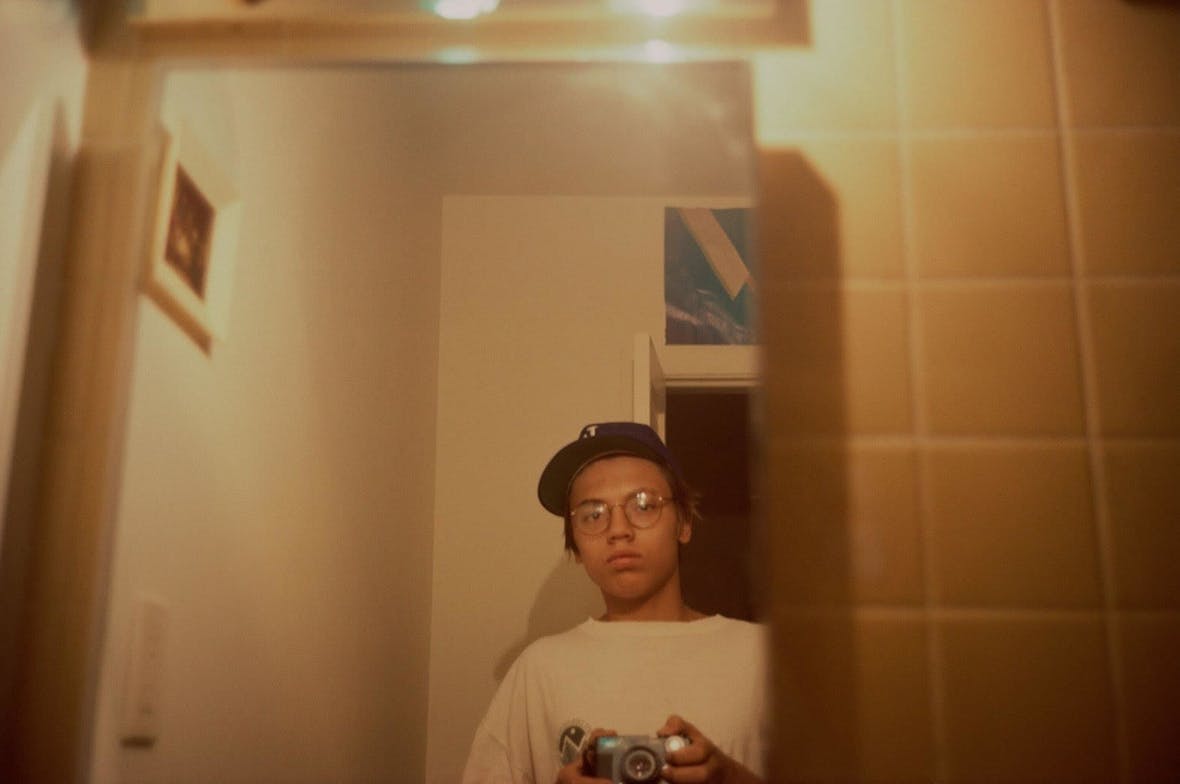Davide Sorrenti’s controversial ‘heroin chic’ look was his trademark, and now a new documentary about the late fashion photographer lets us take a look at why it was made so popular.

Even if you don’t know Davide Sorrenti’s name, you know the infamous photo of a fittingly 90s looking kid in a t-shirt with the words ‘MODELS SUCK’ on the front. Sorrenti was also the name that memorialised the genre of fashion photography that plagued the 90s with a moral dilemma, otherwise known as ‘heroin chic’.
Images of sunken eyed, scarily thin models in dark and seemingly dangerous places littered the fashion photography world. Heroin chic was the desired style and aesthetic for 90s counterculture, embodying the drug-fuelled industry of the time.
Sorrenti was only 20 when he died, and popular opinions made due to his connection to the heroin chic style of photography, heroin was not the cause of his death.
The young fashion photographer was diagnosed with a chronic illness, thalassemia, as an child which forced his family to move from Naples to New York during the 80s. His condition required him to have biweekly blood transfusions and constant medical attention, but unfortunately became the cause of his death.
Sorrenti’s death was forever tainted by the media’s relentless characterisation of it as a heroin overdose, despite autopsy reports that showed minimal amounts of the drug were present in his body at the time of his death.
“There wasn’t enough heroin in his system to kill a fly,” said Francesca Sorrenti, Davide’s mother.
Still, Sorrenti’s death in the midst of his young life and gleaming career sent shock waves through the industry that celebrated drugged up models and photography.

Photo Credit: The Face
After her son’s death, Sorrenti’s mother made countless efforts to call out designers, photographers, and fashion houses who, she claims, allowed drugged models to walk the runway in their shows and told stylists to hold up ‘slumping models’ long enough to get the shot.
She was also the woman who got Elite Models owner John Casablancas to confirm on CNN that there was a drug problem in his business.
Who could forget comments made by former US President Bill Clinton following Sorrenti’s death where he condemned the provocative style and glamorisation of strung-out models.
Taking time out of a prayer breakfast, President Clinton said: “You do not need to glamourise addiction to sell clothes. The glorification of heroin is not creative, it’s destructive. It’s not beautiful; it’s ugly. And this is not about art’ it’s about life and death. And glorifying death is not good for any society.”
Thus, heroin chic was thankfully dropped.
Now, Davide Sorrenti’s legacy is being showcased for everything that it is, exempt of the heroin controversy, in a documentary made about his life and art.
See Know Evil, directed by first-timer Charlie Curran, aims to pay respect to Sorrenti’s talent and examine the time in fashion history that he is irrevocably linked to.
However, British fashion academic Rebecca Arnold, suggests the images associated to ‘heroin chic’ were dubbed as controversial and morally jarring due to their comparison to socially accepted, glossy magazine covers that people were used to.
“We need to ask ourselves why fashion shouldn’t comment on darker things in the culture, because if you look at the history of fashion, it’s not just about women with perfect bodies and perfect lives. It’s far easier to say the fashion industry has a problem, accusing it of glamourising death, than to say we have a problem with youth culture,” Arnold said.

Sorrenti’s art documented New York bohemian life he had been born into, although his artistic expression of his journey was done through fashion photography; he was simply photographing the youth revolution of the late 90s.
Images of his girlfriend at the time, Jamie King, who was an addict herself, are now widely recognisable to audiences. Particularly since she’s gone on to become a successful Hollywood actress.
“I mean we all know that we’re going to die at some point, but to just have it constantly reminded, it’s just such a different take on life. Instead of wallowing in pity he really celebrated life, and was just going for it. He was fearless. It was like an explosion of creativity. I feel like his story is the oldest of all time: he’s watching the clock run out, and trying to make art while he can,” said director Curran.
Take a look at the trailer for the See Know Evil documentary below.
Subscribe to FIB’s newsletter for your weekly dose of music, fashion and pop culture news!






